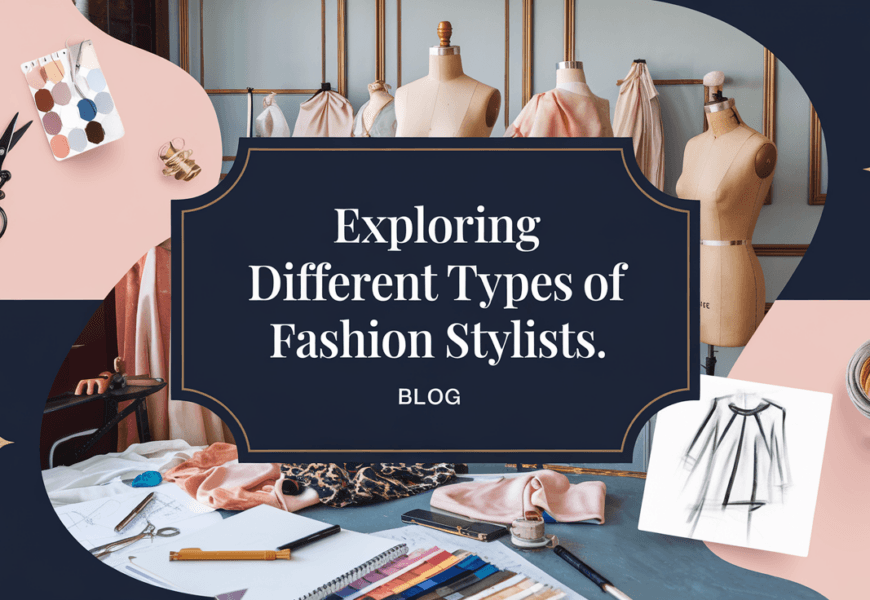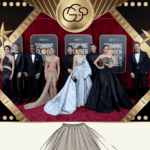Have you ever wondered what it takes to be a fashion stylist or what exactly each type of stylist does? Fashion styling is an exciting and dynamic field that plays a crucial role in shaping the visual elements of media, fashion shows, and personal wardrobes. These creative professionals work diligently behind the scenes to bring fashion concepts to life, collaborating with photographers, makeup artists, editors, and clients to craft the perfect look for campaigns, shows, or events. Let’s take a journey into the world of fashion stylists and discover the various types and roles they play.
Understanding the Role of a Fashion Stylist
A fashion stylist is a curator of style who puts together outfits and ensembles that enhance the client’s image, the theme of a photo shoot, or the story of a fashion show. They blend creativity with an in-depth understanding of fashion to create looks that align with the intended vision. Stylists need a keen eye for detail, a deep understanding of fashion trends and history, and strong interpersonal skills for effective collaboration.
Working with Team Members
In the fashion industry, stylists collaborate with various professionals, forming a cohesive team to achieve the desired results. Stylists interact with photographers to understand the mood of a shoot, while makeup artists and hairdressers bring complementary beauty elements to the looks. They have to communicate effectively with editors and clients to ensure alignment with the overall direction of the project.
Exploring Different Types of Fashion Stylists
Fashion styling is not a monolithic pursuit. Rather, it encompasses various roles, each with its own focus and responsibilities. Let’s explore the different types of fashion stylists and understand their unique contributions.
Editorial Stylists
Editorial stylists are the creative minds behind the fashion spreads found in magazines. Their work involves crafting imaginative and artistic looks that communicate the story or theme of the editorial piece. They collaborate with photographers and creative directors to deliver visually captivating photos that align with the publication’s aesthetic and editorial voice.
Personal Stylists
Personal stylists focus on individual clients, helping them develop and maintain a personal style that reflects their identity and lifestyle. They analyze wardrobes, suggest new pieces or looks, and often assist with personal shopping. These stylists work closely with their clients to enhance their image and boost their confidence.
Celebrity Stylists
Celebrity stylists work with actors, musicians, and other public figures to craft their public image through fashion. Their role involves selecting outfits for events, press appearances, and red-carpet engagements. They need to stay on top of current trends while ensuring the client’s personal brand and comfort are upheld.
Wardrobe Stylists
Wardrobe stylists focus on providing outfits for character representation in TV shows, films, and theater productions. They read scripts to understand characters and collaborate with directors to ensure that clothing aligns with the character’s personality and the overall story. Their work enhances storytelling by visually representing the character’s journey.
Commercial Stylists
Commercial stylists are engaged in creating appealing looks for advertisements and product promotions. They aim to align the styling with the brand’s image while making the products enticing to consumers. Their role requires a balance between creativity and marketing objectives.
Getting Started in the Styling Industry
Entering the fashion styling industry may seem daunting, but it isn’t as exclusive as it appears. While some stylists do have formal fashion degrees, many enter the field driven by a passion for fashion, self-education, and relevant experience.
Breaking into the Industry without a Fashion Degree
A formal fashion education can be beneficial, providing foundational knowledge and networking opportunities. However, it’s not the only pathway. Aspiring stylists often begin by gaining experience through internships or assisting established stylists. Developing a robust portfolio and staying up-to-date with fashion history, designers, and trends are essential steps for success.
Building Essential Skills
Successful stylists possess a set of skills that transcend their innate sense of style. Communication is critical—stylists must convey their vision to team members and clients effectively. Attention to detail ensures that every look is polished and cohesive. Networking also plays a vital role in building professional relationships and accessing opportunities in the industry.
Understanding Salary Expectations
The salary of a fashion stylist can vary significantly based on location, experience, and the type of styling. Here’s a table that highlights some average salaries in major fashion capitals:
| Location | Average Salary | Currency |
|---|---|---|
| London | £24,000 | GBP |
| New York | $50,000 | USD |
Stylists in larger cities or those working with high-profile clients often command higher salaries. However, starting salaries may be lower, with income potential increasing as the stylist gains experience and builds a reputation.
Gaining Experience through Internships and Assistant Roles
Starting as an assistant stylist or taking internships is a practical way to enter the fashion styling industry. These roles offer invaluable learning opportunities and enable aspiring stylists to develop a portfolio and network with industry professionals.
Responsibilities of an Assistant Stylist
Assistant stylists play supportive roles in fashion projects. Their tasks might include organizing and maintaining clothing and accessories, preparing looks for photo shoots, and coordinating product requests from designers and brands. They ensure that everything runs smoothly behind the scenes, allowing lead stylists to focus on creativity and vision.
Crafting a Successful Career in Fashion Styling
Embarking on a career in fashion styling can be a fulfilling journey for those with a passion for fashion and an eye for design. By exploring different types of stylists and gaining experience, you can find your niche and craft a career path that resonates with your interests and goals.
Continuous Learning and Adaptation
The fashion industry is ever-evolving. Stylists must commit to continuous learning and adaptation, embracing new trends and styles while leveraging their creativity. Staying informed about industry shifts and maintaining a flexible approach to styling will ensure longevity and success in this constantly changing field.
Networking and Building a Reputation
Developing a network of industry contacts is essential for career progression. Attending fashion events, engaging on social media, and creating collaborations can enhance visibility. Building a strong reputation will attract more opportunities and potentially elevate your career to new heights.
In conclusion, the world of fashion styling is as diverse as it is exciting. Each type of stylist contributes uniquely to the visual storytelling within the fashion industry. Whether you’re drawn to editorial creativity, the glamour of celebrity styling, or personal transformations, there is a place for you in this vibrant field. With passion, effort, and determination, you can build a thriving career as a fashion stylist and leave a lasting impact on fashion narratives.



